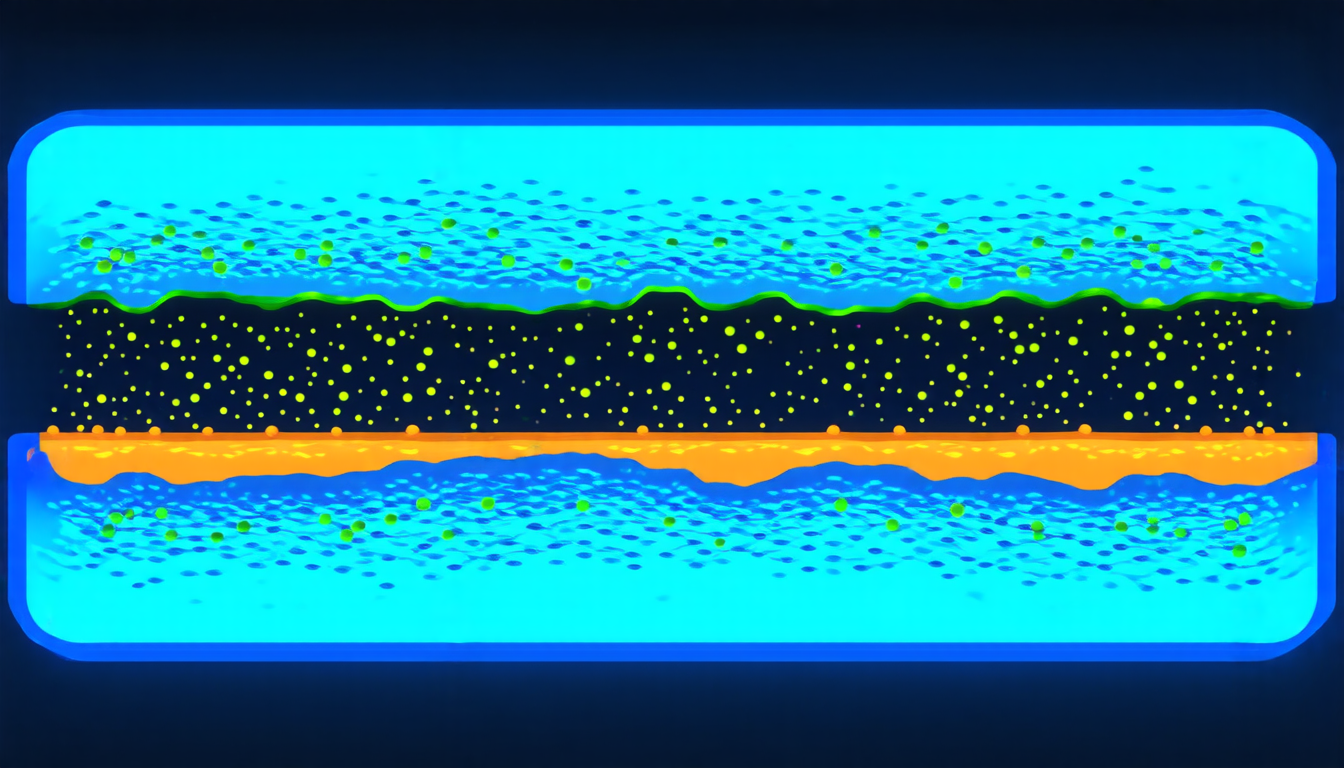Monday 07 April 2025
The intricate dance of ions on a biological membrane is a complex phenomenon that has long fascinated scientists. The way these electrically charged particles move and interact across the delicate boundary between an organism’s cells and its environment can have significant consequences for our understanding of life itself.
A recent study has shed new light on this process, revealing the existence of two distinct timescales at play in the charging and discharging of biological membranes. These findings could have important implications for our comprehension of electrical signaling in living organisms, as well as the development of new treatments for diseases related to ion imbalance.
The research focused on the behavior of ions such as sodium, potassium, and chloride across a planar membrane, simulating the conditions found at the boundary between cells and their surroundings. By using mathematical models and computer simulations, the scientists were able to tease out the intricate details of this process, revealing two distinct timescales: one that is relatively fast, occurring on the order of milliseconds, and another that is much slower, taking place over seconds or even minutes.
The faster timescale is associated with the rapid formation of an electric double layer at the membrane surface, a phenomenon known as electrocapillarity. This process is driven by the interactions between ions and the membrane’s dielectric properties, which influence the movement of charge across the boundary.
In contrast, the slower timescale is linked to the diffusion of ions within the electrolyte solution surrounding the membrane. This process occurs over a much longer period, as ions slowly spread out from their initial concentrations to achieve equilibrium.
The study also highlights the importance of nonlinear effects in this system, which can significantly alter the behavior of ions at the membrane surface. These nonlinearity-induced changes can have significant implications for our understanding of electrical signaling in biological systems, where even small variations in ion flow can have profound effects on cellular function and behavior.
Furthermore, the research has potential applications in the development of new treatments for diseases related to ion imbalance, such as epilepsy or muscular dystrophy. A deeper understanding of the complex interactions between ions and biological membranes could lead to more effective therapies that target specific aspects of this process.
In essence, this study represents a significant step forward in our comprehension of the intricate dance of ions on biological membranes. By revealing the existence of two distinct timescales and highlighting the importance of nonlinear effects, researchers are one step closer to unlocking the secrets of electrical signaling in living organisms.
Cite this article: “Unlocking the Secrets of Biological Membranes Capacitive Charging Dynamics”, The Science Archive, 2025.
Ions, Biological Membranes, Electrical Signaling, Ion Imbalance, Nonlinear Effects, Electrocapillarity, Dielectric Properties, Electrolyte Solution, Diffusion, Milliseconds







